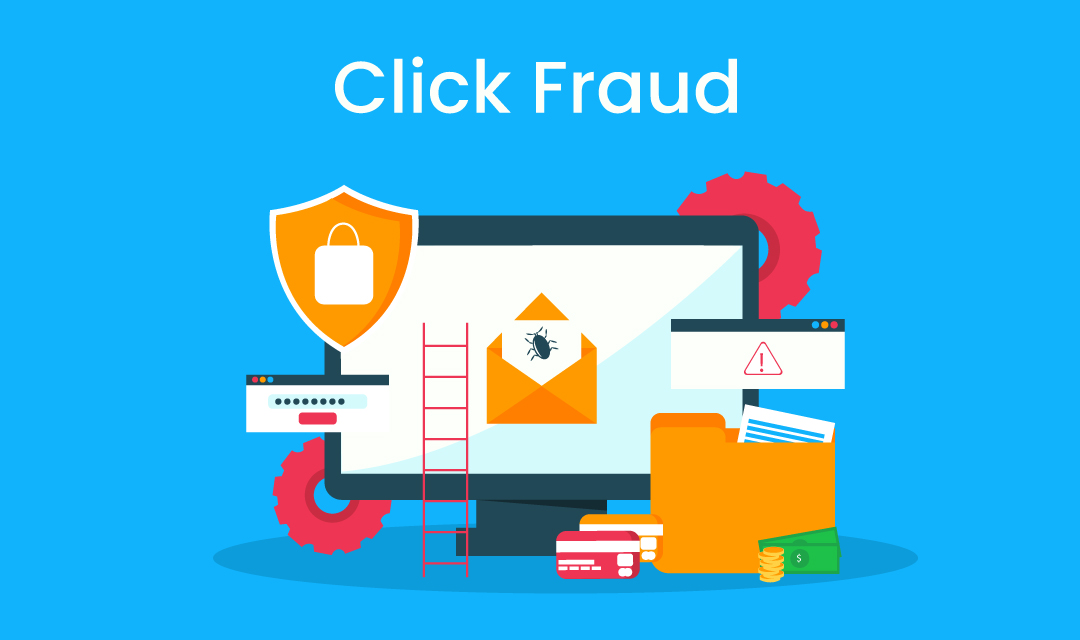
Whether you're an advertiser or publisher, click fraud is a concern for everyone. From an advertiser's point of view, click fraud will cause them to pay for traffic that is not intended. For publishers, click fraud may seem to increase their earnings initially but it may hurt their SEO, may invalidate their earnings at a later time, and also may potentially lose their publisher account. Ad networks such as Google have created measures to fight against click frauds and implemented various ways to detect and filter fraudulent clicks from costing advertisers.
What is click fraud?
Click fraud is the act of intentionally clicking on pay-per-click (PPC) ads with no intent to consume ads. Each click will deplete the ad budget with no gain in ROI, and bringing down the conversion rate significantly below its target. Fraudulent clicks come from either click bots or humans to either deplete the advertiser's ad budget or gain monetary gain from the publisher's side. Click fraud is different than invalid clicks where the ladder may be coming from repeated or accidental clicks.
Who are the perpetrators of click fraud?
There are several parties who may benefit from initiating click frauds, and they are:
- Competitors: A cost-per-click (CPC) on competitive keywords may range from $1 to $10, and could potentially go as high as $50 on rare cases. Ads networks use an auction system to rank advertisers per CPC bidding, and by drying up competitor's budgets a company may benefit from it.
- Publishers: Publishers may click on their own ads, or encourage visitors to click on the ads to help them out. This is an illegal practice and will have a negative impact on publishers in the long run and it is highly discouraged.
- Affiliates: Affiliate Marketers may be paid by leads, sales, or impressions. By generating thousands of fraudulent clicks, affiliates can earn extra money.
- Visitors: Some visitors may click on the ads to help publishers with their great content, but this is fraudulent as the visitor has no intention to buy anything from the ads. Although the intention may be good, this is certainly illegal and many visitors may not even know it's illegal.
Ad networks are getting smarter and smarter, and be able to detect all sorts of click frauds. Google in particular is leading the group with an automated detection system to fight against click frauds. Repeated clicks from the same IP address and bot detection algorithms contribute against click frauds.
How to discern click frauds?
Many advertisers are concerned about click frauds, and quickly lose interest in paid advertisements. Growing your business is not easy, and improving conversion rates takes time and a huge effort. Ad networks do their own due diligence to protect you against click frauds, but no detection system is perfect. If you have a development resource available, you can easily add a Do-It-Yourself routine to capture visitor statics to detect click frauds. Here are a few pieces of information you can capture to diagnose your traffic.
- IP Address: This is the key information you'll need to identify the visitor. By using the visitor's IP address, you can identify how many clicks are initiated and find location of your visitors. We offer an IP-to-Country API to help you find where your visitors are coming from.
- User Agent: Browser User agent is another piece of information you can use to detect bot clicks from user clicks. You can use our user agent tool to view the user's browser info. Please note that user agent can be faked, so this isn't a perfect way to detect bots but it will give you a clue if no or unknown user agent is present.
- UTM Parameters: You can capture UTM parameters such as the utm_source, utm_medium, utm_campaign, utm_term, and utm_content along with IP address to determine the advertising source of possible click frauds.
- Click ID / Client ID: If you're using Google Ads, you can also capture gclid (Google Click ID) and Client ID to capture specific ads.
- Timestamp: In order to analyze when click frauds occurred, you'll have to capture the date and time of the click when it happened.
Conclusion
Despite ad networks striving to filter all possible click frauds, no network is free from click frauds. As an advertiser, you do not have to give up paid advertisements in fear of click frauds. Instead, you can implement your own DIY detection suite and fight against click fraud. PPC is still one of the most widely used advertisement campaigns used today.
Share this post
Leave a comment
All comments are moderated. Spammy and bot submitted comments are deleted. Please submit the comments that are helpful to others, and we'll approve your comments. A comment that includes outbound link will only be approved if the content is relevant to the topic, and has some value to our readers.

Comments (0)
No comment